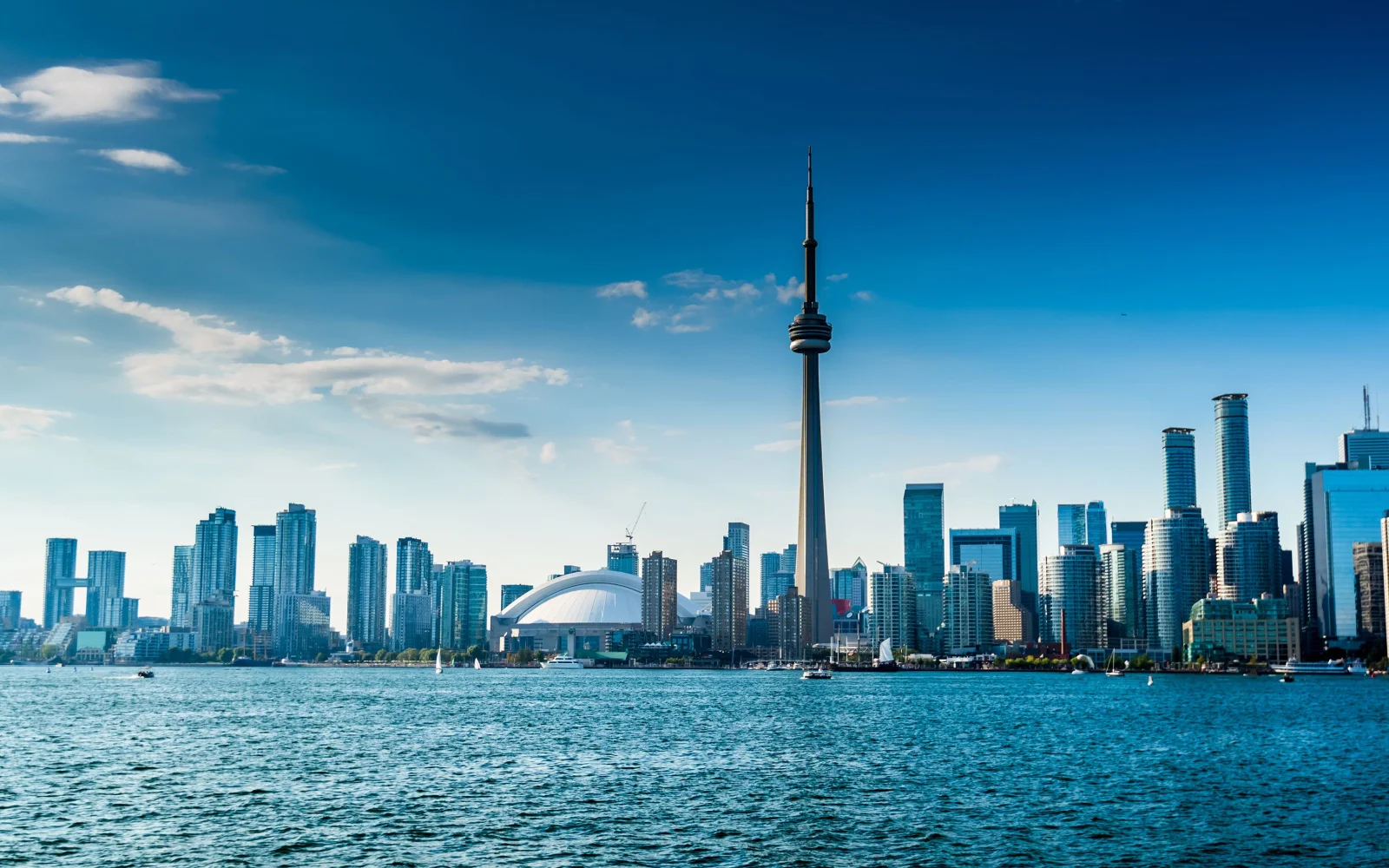Canada is one of the best places in the world to visit for nature lovers. Visitors can check out dramatic landscapes such as Niagara Falls on the eastern United States border, the Rocky Mountains to the west, and of course the vast landscapes of the polar north.
Canada has more to offer than just nature. Visitors also enjoy the Old World, French feeling of Montreal and all of Quebec, the bustling modern metropolis of Toronto, and the laid-back charm of Vancouver.
It’s no wonder that over 22 million travelers visit Canada each year. Canada has a reputation as a safe, calm country, but whenever you visit a new place, you probably want to research the safety situation.
You never know what unpleasant surprise might be lurking behind the wanderlust-inspired photographs.
We put together this extensive travel guide to help you figure out if Canada is safe to visit. Keep reading to learn more about any safety concerns you might have, including crime.
Is Canada Safe to Visit in 2025?
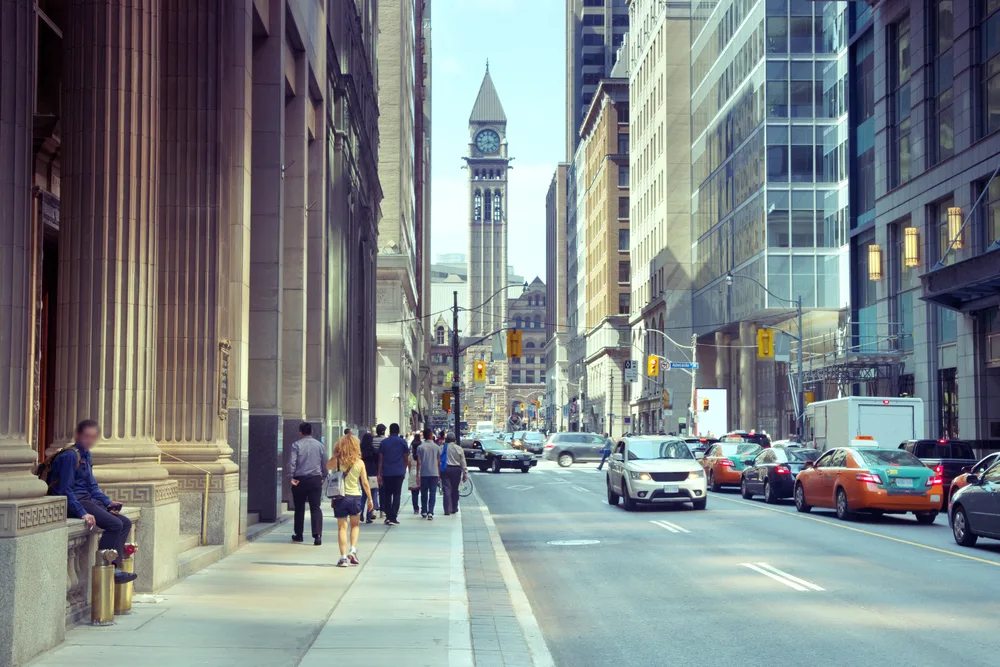
Maxi_kore/Shutterstock
Canada is one of the safest countries in the world, so you should have a wonderful time when you visit. Crime rates in Canada are very low, especially in popular tourist attractions.
Key Points:
- Canada is considered one of the safest countries in the world, with low crime rates and a strong safety record. Visitors should feel secure while exploring its diverse landscapes and cities.
- Minor safety concerns include petty theft, vehicle break-ins, and some protests, but these issues are generally manageable with common-sense precautions.
- Nature-related risks, such as extreme weather and wildlife encounters, pose the most substantial safety threats in Canada. Researching and preparing for outdoor activities is essential to stay safe in its rugged landscapes.
Besides some petty theft in major cities and the famously turbulent Canadian winters, you don’t have much to worry about when you visit this amazing northern country.
Canada is routinely ranked as one of the safest places in the world. For example, it is the 12th safest country in the world according to the Global Peace Index. This index evaluates countries based on a few factors, including safety and security, militarization, and conflicts.
If Canada ranks so well on their list, it must be a safe place indeed. Foreign governments rarely issue travel advisories for Canada. For example, the United States, Canada’s southern neighbor, has Canada under a Level One travel advisory, the lowest possible precaution level.
When countries list concerns for travelers to Canada in their travel advisories, they are usually minor, such as:
- Petty theft
- Vehicle break-ins
- Scams
- Credit card fraud
Some governments warn about the potential for protests in Canada. In February 2022, the “Freedom Convoy” protest in Ottawa against COVID-19 restrictions disrupted the city and surrounding areas.
In response, the Canadian government has tightened security in the capital somewhat, and some roads leading up to important government buildings are still restricted to vehicle traffic.
However, the risk of civil unrest is fairly low in Canada. Although some governments caution about the risk of terrorism, that is also another problem that is rare in Canada.
The UK government has a list of recent terrorist attacks, including a vehicle running into a crowd in 2021 and a machete attack on a massage parlor in 2020.
Terrorist activity in Canada is motivated by a variety of ideologies, but although all incidents are tragic, they usually have a low fatality rate. If you are nervous, you can always check the Canadian government’s official threat level assessment.
By far the biggest threat to your safety in Canada comes from nature, not from other people.
Most people visit Canada for the opportunity to hike, ski, kayak, or engage in other outdoor activities in rugged landscapes such as the mountains and polar plains, maybe even catching a glimpse of local wildlife along the way.
However, if you do not take the right precautions, a trip outdoors could end badly. There is no way to give a comprehensive guide to staying safe in nature in a few paragraphs because the landscapes of Canada are so diverse.
The most important thing you can do is research. Read up on potential natural disasters, wildlife attacks, and weather conditions.
Make sure that you wear appropriate clothing, especially for the bitterly cold winters, pack extra food and water if you are hiking, and memorize emergency numbers and ways to get help. Always follow local regulations and safety advice.
The wildlife in Canada can be very dangerous, so make sure you never approach wild animals. If you’re camping, store your food and rubbish carefully to avoid attracting bears.
Crime in Canada
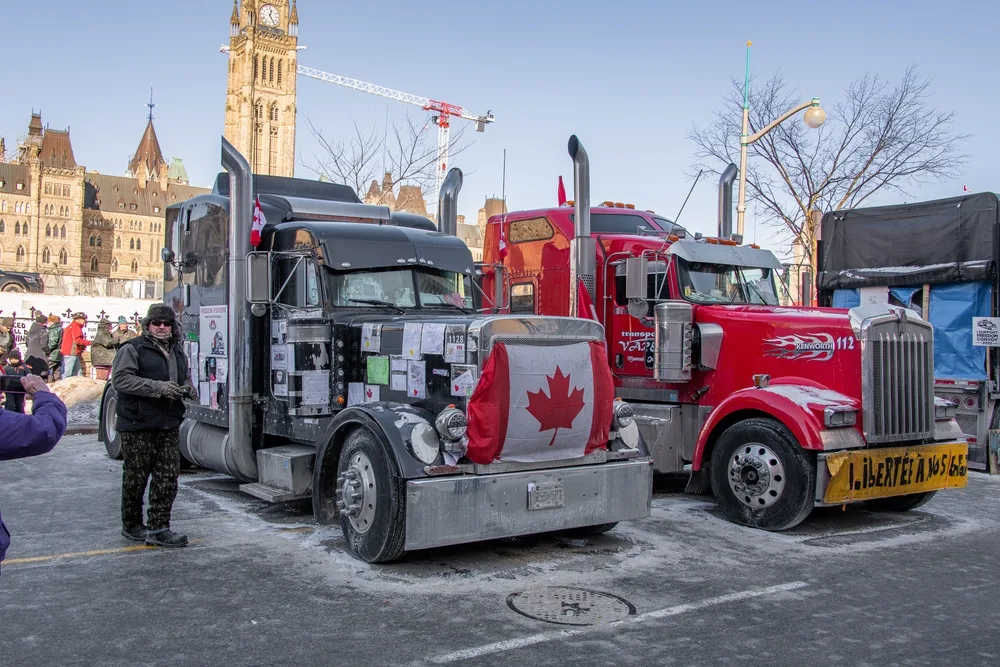
Ottawa Ontario Canada, February 13 2022, Freedom Trucker Convoy/Franklin McKay/Shutterstock
Crime isn’t one of your primary concerns when visiting Canada — freezing in the winter or having a bad encounter in nature is probably a higher risk. To put your mind at ease, here are some crime statistics that drive home just how safe Canada is.
Statistics Canada publishes official crime statistics for the country. According to the most recent available figures, from 2021, Canada’s Police Severity Index decreased slightly, although reported crimes increased slightly, to 5,375 total crimes per 100,000 people.
Some breakdowns of Canada’s crime statistics are concerning. According to police reports, violent crime in Canada increased in 2021 by 5%.
The biggest increases happened in the rate of reported sexual assault, which increased by 18%, and in the rate of reported hate-motivated crimes, which increased by a whopping 27%. There are a few explanations for why violent crime has increased.
Some analysts blame the increase in homicides in particular on gang-related violence. Other potential factors include mistrust in authority and law enforcement and a lack of social cohesion and safety nets due to the COVID-19 pandemic.
By contrast, non-violent crimes decreased in 2021. Breaking and entering declined by 10%, although it is still the most common form of property crime. Since Canada is mostly an economically prosperous country, it makes sense that property crime rates are low.
Although Canada has its fair share of problems, just like any other country in the world, that doesn’t mean that you’re likely to experience them first-hand.
Most violent crimes occur as incidents between people that are somehow connected to each other or part of gang violence, rarely targeting strangers. It’s also easy enough to avoid areas with higher crime rates, which is where most of the bad incidents occur.
Petty Theft
No matter how safe a place is, it still experiences petty theft. This is true pretty much anywhere in the world and is also true in Canada. The many crowds of tourists, especially in the bigger cities, are tempting to thieves looking to make a quick buck.
The New Zealand government warns about petty theft such as pickpocketing, bag snatching, and particularly passport theft.
Common hot spots for theft include big cities such as Toronto and Vancouver, public transportation such as Montreal’s metro, and in touristy areas that attract big crowds, such as the town around Niagara Falls.
The UK government also warns that thieves sometimes hang out in hotels that they know attract a lot of tourists, so stay alert even in your hotel lobby.
Basic safety precautions are usually good enough to keep you safe. Just make sure that you never leave your valuables unattended, including in restaurants, cafes, and hotel lobbies, and other places where you might feel safe.
Avoid letting your phone rest on the table or counter while you are paying, or letting your bag hang off the back of a chair.
Passport theft is a common form of petty theft targeting tourists, so make sure that you have copies of your ID in a secure location, online, and with friends.
Instead of carrying your passport with you, carry a photocopy of it — it’s usually enough to serve as an ID if you need one while out and about.
Vehicle Break-Ins
Many people opt to rent a car for getting around Canada. A vehicle makes it a lot easier to visit natural landscapes that are far away from major cities and may be hard to reach with public transportation.
However, renting a car leaves you vulnerable to other crimes, such as theft from vehicles. Many thieves target rental cars since they know tourists are more likely to have luggage or other possessions in the car.
The Australian government warns that theft from cars is common in Canada’s big cities. Theft can also occur in smaller places that are popular tourist destinations, such as the town of Niagara, or popular trailheads and parking lots in natural parks.
A few basic precautions can help prevent you from being the victim of a vehicle break-in. Never, ever leave valuables such as passports, wallets, and phones in the car, even for a few minutes.
Even if you’re just stepping out to pay a toll or get gas, put your valuables in your pocket. If you can, avoid leaving other possessions such as luggage unattended in your car.
Try to drop your things off at your accommodation before you go out exploring. If you have to keep some things in your car, make sure that they are in a place where they aren’t visible, such as your trunk or glove compartment.
Avoiding Bad Areas
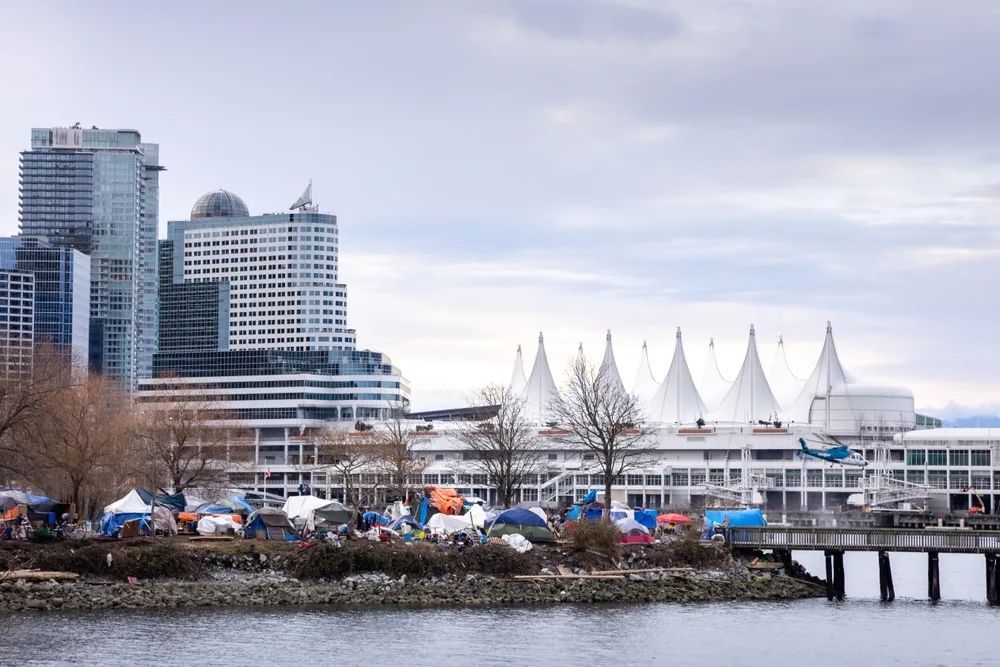
VANCOUVER, BC, CANADA – MAR 21, 2023: Homeless tent city in Downtown Vancouver Eastside/Adam Melnyk/Shutterstock
Although Canada is overall a safe place to visit, like any other country, it has some destinations that are less safe than others. Like any big city, Canada’s big cities have certain neighborhoods with higher crime rates.
In Vancouver, be careful when going through the Downtown Eastside, a place known for its poverty and street crime, and don’t go at night. In Toronto, avoid Regent Park and St. James Town. In Montreal, be careful in Montreal-Nord after dark.
The city of Edmonton has some of the highest crime rates in Canada, as does the rest of the region of Alberta dedicated to the oil fields. This region is particularly unsafe for women.
Things to Consider
Here are a few other safety tips for Canada:
- If you’re traveling to the Arctic regions, keep in mind that rescue crews can’t operate as well in this remote area. Take additional supplies with you, even if you’re just going on a cruise, as it might take a while for help to reach you in case of an emergency.
- Unless you adore winter sports, try to visit during spring, summer, or early fall to avoid the worst of Canada’s winters.
- Canada has two stunning coastlines, but beaches that open onto the open ocean often have very strong currents, so be very careful when you go swimming and read local warnings.
- Drinking in public is illegal in some places. So check local regulations or only consume alcohol in bars and other places with a license to sell drinks.
Frequently Asked Questions
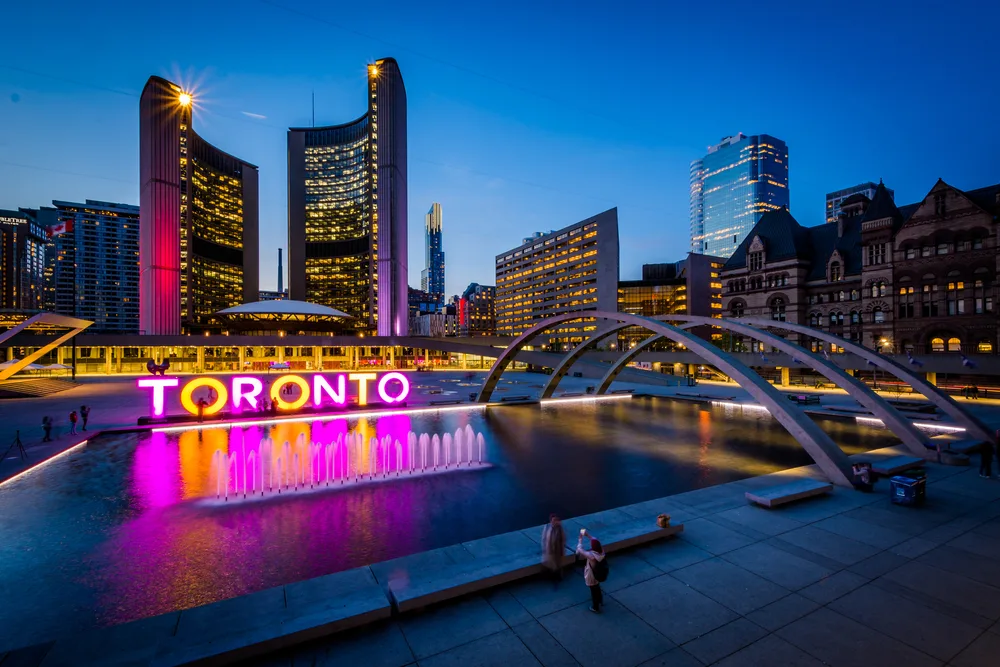
Jon Bilous/Shutterstock
Here are some other questions travelers to Canada have asked before:
Is Canada safe to go out at night?
Most parts of Canada are safe, even at night. Just be careful if you are staying in an oil industry town as crime tends to be higher there, and make sure that the neighborhoods of a city you visit are safe for travelers.
Is Canada cheap to live in?
Canada is more expensive than most countries in the world, but this also depends on where in Canada you are living. The cities of Toronto and Vancouver are very expensive, but some rural areas are very affordable.
Is Toronto a safe place to visit?
Yes, Toronto is a safe place to visit. Like any big city, it has some neighborhoods with higher crime rates, but these are far away from any tourist attractions. Plus, it is much safer than most U.S. cities, even smaller ones.
Is Canada safe for solo female travelers?
Yes, Canada is safe for solo female travelers and has some of the lowest rates of violence against women. However, the situation for some local women is different.
Indigenous women are attacked and even murdered at far higher rates than non-indigenous women, a problem that tribes have been trying to draw attention to for years.
Is it OK to kiss in public in Canada?
Yes, it is OK to kiss or otherwise show affection in Canada. Even LGBT couples can kiss openly in most of Canada as the country is very open, although some rural areas are still conservative.
So, Is Canada Safe to Visit?
Canada is one of the safest countries in the world to visit. It has a very low crime rate and low rates of other potentially dangerous incidents such as terrorism. As long as you bundle up properly for the winter, you should have a good time. Happy travels!



